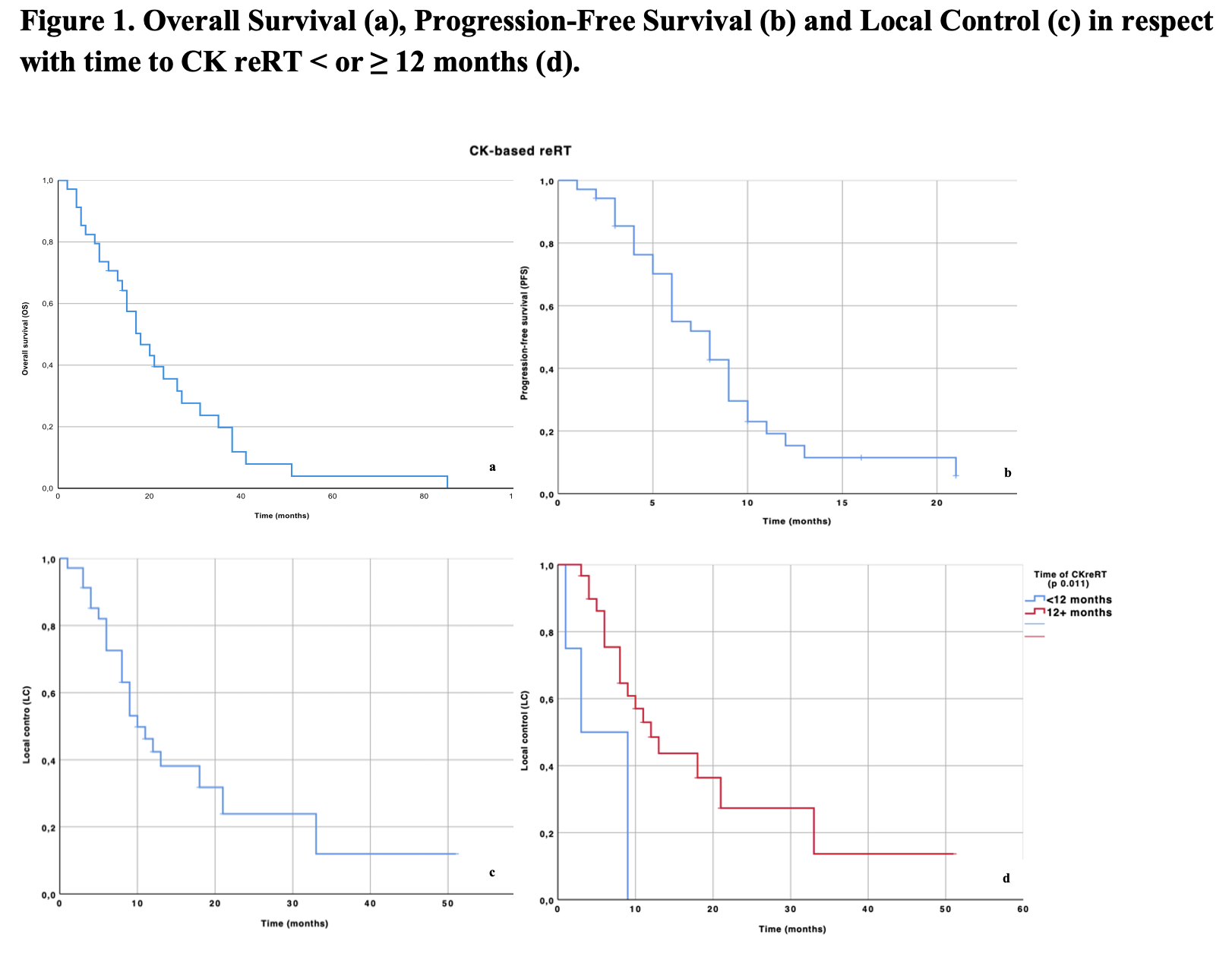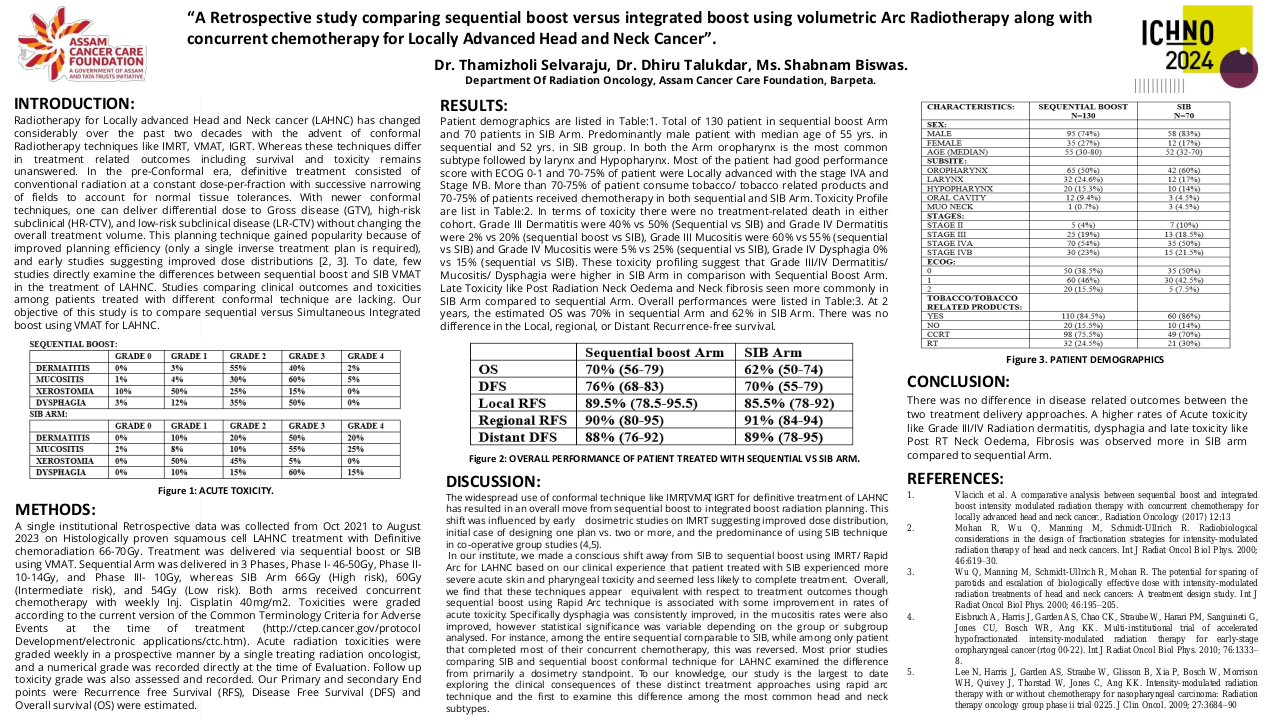Hypofractionated re-irradiation with Cyberknife for locoregionally recurrent head and neck cancer: a single-center study.
Purpose/Objective
Loco-regional recurrence (LRR) is the predominant pattern of failure in locally-advanced head and neck cancer (HNC), both in squamous cell carcinoma (SCC) and non-squamous histotypes. Despite the proven role of radiotherapy (RT) as primary treatment strategy, there is sparse evidence on the use of reirradiation (ReRT) in recurrent HNC (rHNC). Various regimens of hypofractionation have been described in the literature, without a clear consensus. The aim of our single-centre study is to evaluate the clinical outcome of unresectable rHNC patients treated with Cyberknife-based (CK) hypofractionated reRT.
Material/Methods
We retrospectively analyzed data from consecutive patients with rHNC who received CK reRT at our institution. All eligible patients had a recurrent, non-metastatic, previously irradiated unresectable HNC. Each case was discussed at a multidisciplinary level before treatment. Local control (LC), progression-free survival (PFS) and overall survival (OS) were calculated using the Kaplan-Meier method and log rank test with time measured from the date of last day of reRT to date of local recurrence, progression of disease or death, respectively.
Results
First curatively-intended course of RT was delivered from 1997 to 2020, concomitantly with chemotherapy or not. Thirty-five patients received Cyberknife (CK)-based hypofractionated reRT. The majority of patients (22, 63%) had a diagnosis of SCC and 13 patients (37%) had other histotypes than SCC. The median age of the cohort was 62 years at diagnosis. The CK reRT was performed from 2012 to 2022. The most commonly adopted schedules of reRT were 25Gy (57%) and 30Gy (43%) in 5 fractions on alternating days. After a median follow-up of 12 months (range 2-48), 6 out of 35 patients were alive. Causes of death were related to HNC in 12 patients and in 9 to other causes. The median LC and the 1-year LC rate were 10 months (95% CI 6,6-13,4 months) and 42%, respectively. The median PFS and OS and the 1-year PFS and OS rates were 8 months (95% CI 6.1-9,8 months), 18 months (95% CI 11,8-24,1 months) and 15% and 71% (Figure 1), respectively. At univariate analysis, a negative correlation between time to CK reRT < 12 months and LC (p 0.01) was reported. Moreover, a positive trend association between time from first to second irradiation ≥ 12 months and OS (p 0.09) was shown, in line with findings available from the literature. A significantly better OS was found in patients aged < 65 years (p 0.045).
Conclusion
From our analysis, hypofractionated ReRT can be viewed as a well-tolerated treatment option for rHNC with potential for prolonged local control in appropriately selected patients.







